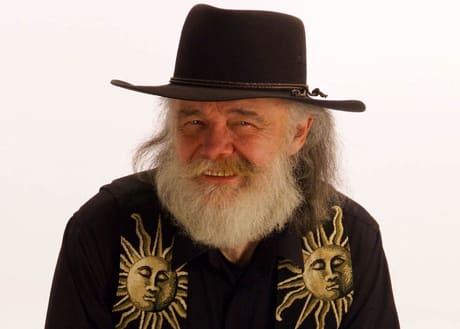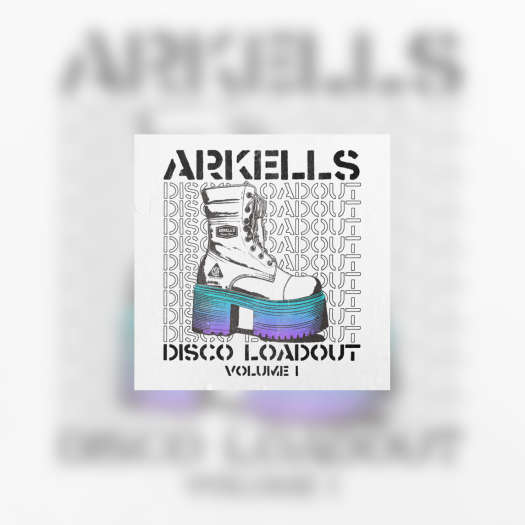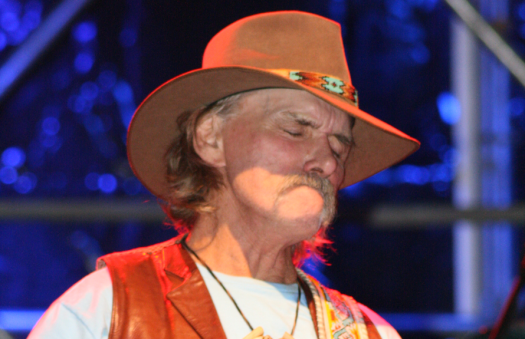As visionary keyboardist for the Band, Garth Hudson's place in rock and roll history was secured decades ago. Yet, resting on that reputation is not something the 73-year-old London, Ontario native has done since the Band officially ceased with the passing of bassist Rick Danko in 1999. Apart from releasing his first solo album in 2001, The Sea To The North, Hudson has contributed his signature sounds to the work of artists as varied as Neko Case, Lemonheads, Secret Machines, and Daniel Lanois. His natural flair for collaboration is fully displayed on Garth Hudson Presents a Canadian Celebration of The Band, his latest project that will donate part of its proceeds to Toronto's Hospital for Sick Children. While there are several tribute albums to the Band already out there, none are like this one. Apart from consisting entirely of performances by Canadian artists, the songs represent Hudson's personal favourites of the Band's repertoire. He also appears throughout the album himself, effortlessly blending in with Blue Rodeo, Bruce Cockburn, Cowboy Junkies, Mary Margaret O'Hara, and arguably the most anticipated track, Neil Young and the Sadies' version of "This Wheel's On Fire." Exclaim! was fortunate to meet with Garth and his wife Maud recently in Toronto.
What was the catalyst for doing this album?
When we put together the last Band box set [2005's A Musical History], it required listening to everything again. There were a lot of songs ― other than the ones that everybody knows ― that still held up, and these included many that were among my favourites to play. I've often been asked which songs I enjoyed playing the most, so in a way this album is a response to that. And then of course, when we decided to donate some of the money to the Hospital for Sick Children, that gave everything a real sense of purpose.
Was your intention to match certain songs with certain artists?
Yes. That's something I'd thought about long before we started making this album. I've always felt that one of our later songs, "Right As Rain," would be ideal for Tony Bennett to sing, and I would still like to hear that. But doing an album with Canadian artists became a very appealing prospect, because so many of them still seem to have a strong connection to what we did. That helped greatly, because the sequencing of the album was very important to me. These songs show the many different aspects of what the Band could do, so the artists had to be aware of that.
You play on every track, but each artist puts their own stamp on the songs. Was it easy for you to allow the artists that freedom?
There are so many great musicians on this album, there was never any doubt that they would do whatever felt right to them. The interesting thing was that in a couple of cases the artists had not heard the songs they were asked to do. Suzie McNeil became involved early on, and my wife Maud suggested that she sing "Ain't Got No Home." Suzie wasn't entirely familiar with it, but it ended up suiting her style. Another example is Ian Thornley, who had not heard "Chest Fever" before, and in his performance you can hear that excitement of discovering something for the first time. On the other hand, having Cowboy Junkies do "Clothes Line Saga," Blue Rodeo do "King Harvest," and Mary Margaret O'Hara do "Out Of The Blue" was entirely fitting.
A lot of people are excited about hearing Neil Young with the Sadies. What was that session like?
They were brought together through Neil's brother Bob, the last time Neil was in Toronto for a concert. Neil chose to do "This Wheel's On Fire" because he said that was his favourite song of ours. It was a very easy session. The Sadies were well prepared. The biggest challenge was getting Neil's amp set up. He's had it customized in order to play at maximum volume at all times, and I believe now for his concerts he has it completely isolated under the stage. We had to try to get that same kind of isolation in our studio, and once we did, everything came together quickly.
Even though "Move To Japan" isn't a well-known song, I think people are going to be surprised by how the Trews interpreted it.
That introduction was done by their drummer [Sean Dalton], who got everyone laughing by speaking in his Newfoundland jargon. He did 11 takes, and I edited all of the best parts together. There were some four-letter words that had to be taken out; we couldn't have any of that on a record for Sick Kids Hospital.
I've always admired how important it is for you to remind people that the Band were Canadian, even though you were all raised on American music and became stars in America. It must give you a good feeling to know that so many younger Canadian artists are still inspired by your work.
Yes it does. It's been wonderful for me to work with groups like the Sadies who possess the same sort of musical curiosity, and work ethic, that all of us had when we were starting out. We wanted to play rock'n'roll, which was still the new sound back then, but we were also interested in so many other things that were just part of what you heard if you grew up in Canada at that time. I think that's something people should understand, and that's why I'm also glad to be a part of documentary about [Toronto's] Yonge Street that will be coming out in 2011. A lot of culture was concentrated there, and it rubbed off on us during our formative years. On any given night you could hear blues singers, jazz groups, folk singers, country singers, all within the radius of a few blocks. It's nice when people say that we played a role in all of that, but we were absorbing just as much of what was going on as everybody else was.
What was the catalyst for doing this album?
When we put together the last Band box set [2005's A Musical History], it required listening to everything again. There were a lot of songs ― other than the ones that everybody knows ― that still held up, and these included many that were among my favourites to play. I've often been asked which songs I enjoyed playing the most, so in a way this album is a response to that. And then of course, when we decided to donate some of the money to the Hospital for Sick Children, that gave everything a real sense of purpose.
Was your intention to match certain songs with certain artists?
Yes. That's something I'd thought about long before we started making this album. I've always felt that one of our later songs, "Right As Rain," would be ideal for Tony Bennett to sing, and I would still like to hear that. But doing an album with Canadian artists became a very appealing prospect, because so many of them still seem to have a strong connection to what we did. That helped greatly, because the sequencing of the album was very important to me. These songs show the many different aspects of what the Band could do, so the artists had to be aware of that.
You play on every track, but each artist puts their own stamp on the songs. Was it easy for you to allow the artists that freedom?
There are so many great musicians on this album, there was never any doubt that they would do whatever felt right to them. The interesting thing was that in a couple of cases the artists had not heard the songs they were asked to do. Suzie McNeil became involved early on, and my wife Maud suggested that she sing "Ain't Got No Home." Suzie wasn't entirely familiar with it, but it ended up suiting her style. Another example is Ian Thornley, who had not heard "Chest Fever" before, and in his performance you can hear that excitement of discovering something for the first time. On the other hand, having Cowboy Junkies do "Clothes Line Saga," Blue Rodeo do "King Harvest," and Mary Margaret O'Hara do "Out Of The Blue" was entirely fitting.
A lot of people are excited about hearing Neil Young with the Sadies. What was that session like?
They were brought together through Neil's brother Bob, the last time Neil was in Toronto for a concert. Neil chose to do "This Wheel's On Fire" because he said that was his favourite song of ours. It was a very easy session. The Sadies were well prepared. The biggest challenge was getting Neil's amp set up. He's had it customized in order to play at maximum volume at all times, and I believe now for his concerts he has it completely isolated under the stage. We had to try to get that same kind of isolation in our studio, and once we did, everything came together quickly.
Even though "Move To Japan" isn't a well-known song, I think people are going to be surprised by how the Trews interpreted it.
That introduction was done by their drummer [Sean Dalton], who got everyone laughing by speaking in his Newfoundland jargon. He did 11 takes, and I edited all of the best parts together. There were some four-letter words that had to be taken out; we couldn't have any of that on a record for Sick Kids Hospital.
I've always admired how important it is for you to remind people that the Band were Canadian, even though you were all raised on American music and became stars in America. It must give you a good feeling to know that so many younger Canadian artists are still inspired by your work.
Yes it does. It's been wonderful for me to work with groups like the Sadies who possess the same sort of musical curiosity, and work ethic, that all of us had when we were starting out. We wanted to play rock'n'roll, which was still the new sound back then, but we were also interested in so many other things that were just part of what you heard if you grew up in Canada at that time. I think that's something people should understand, and that's why I'm also glad to be a part of documentary about [Toronto's] Yonge Street that will be coming out in 2011. A lot of culture was concentrated there, and it rubbed off on us during our formative years. On any given night you could hear blues singers, jazz groups, folk singers, country singers, all within the radius of a few blocks. It's nice when people say that we played a role in all of that, but we were absorbing just as much of what was going on as everybody else was.




